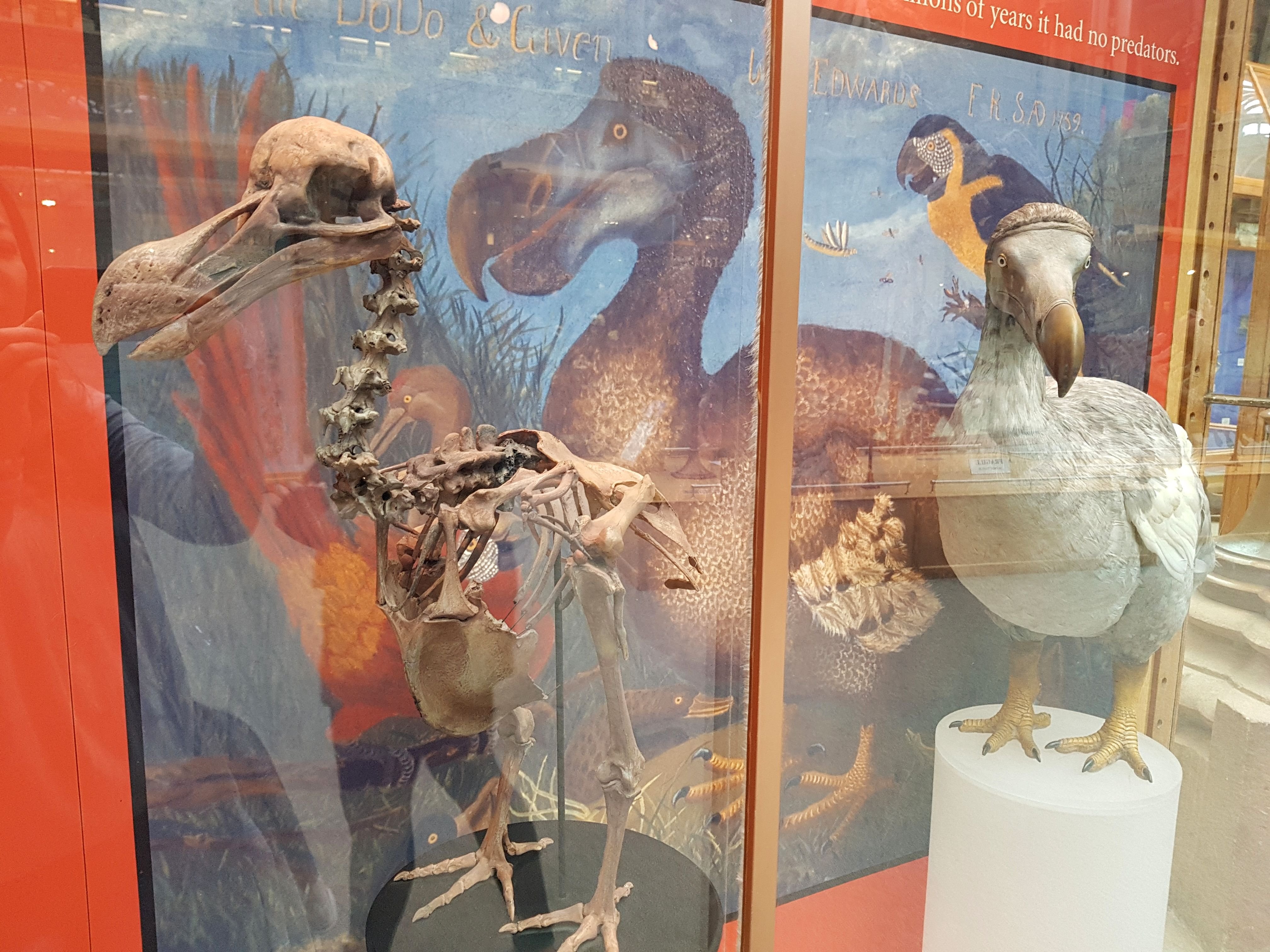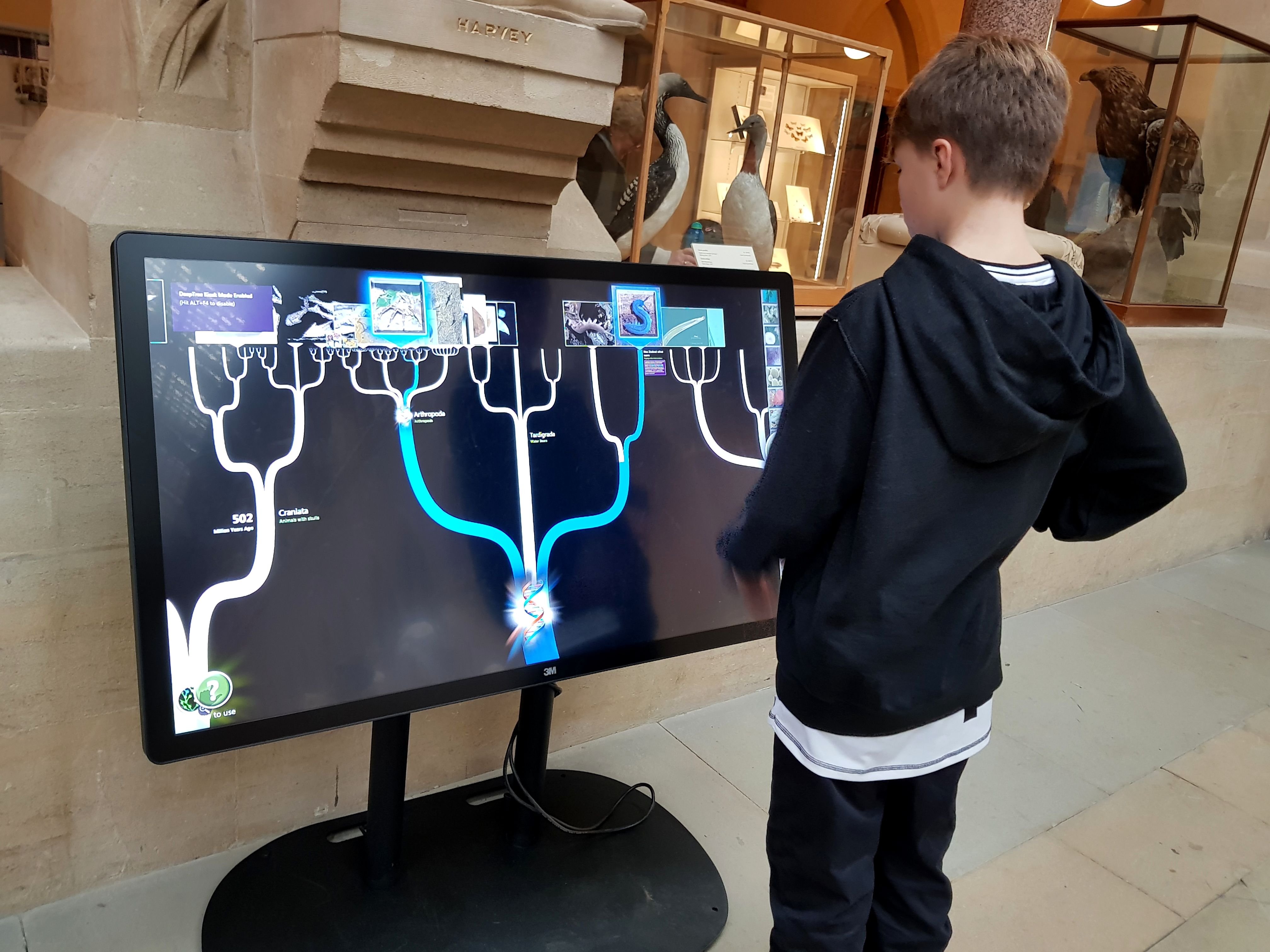
The Oxford University Museum of Natural History is a magical yet informative place to visit. In essence, it is a scaled-down version of the Natural History Museum back in London though enjoying its own unique charm. There are countless fossils, relics and specimens on displays which children as well as adults can enjoy and by educated by. The main venue is located on Park road in the heart of Oxford city.





As soon as I made my way through the museum doors, my breath immediately taken aback. The architecture of the building was stunning, in particularly that spectacular high-glass roof, accommodating for ample natural light flooding into the natural history museum floor-plan. The interesting stylization is surely one of its kind.
In addition, each pillar throughout the museum is itself an exhibit, made from various types of stones and each one producing their own rich history value as well.
Anyone interested in many varieties of animals across an expansive timeline will be fascinated here. As you would expect coming to Oxford, this is a world class museum with a firm emphasis on the theory of evolution. Everything from skeletal dinosaurs, stuffed bears and other various exhibits are organised along various pathways indoors. From the beginnings of the planet through to modern-day man, the entire museum clearly demonstrates the evolution of life and possibilities on what the future holds.
There are also well presented information panels below each piece. Short and sweet but very interesting for people of all ages.





Brown and black bear
Right at the entrance, I was greeted by two life-size stuffed American Brown and Black Bears. Surprisingly, you are actually encouraged to touch them which is superb given the inquisitive nature of young kids.



Dinosaur skeletons and others
The museum houses a brilliant collection of dinosaur fossils complete with rich histories regarding their habits, biology and individual life-cycles.




There are also numerous skeleton remains of various species of animal ranging from pigs to elephants, just to name a few. Some of the bones on display are millions of years old.










Dodo
They also have the most complete Dodo skeleton in the world. The last surviving bird died out around 1662. Like the ostrich, it wasn't capable of flight but looked very cute!



Sea life Collection











Here are a few other items of interest in the museum...




There are also some other fun and games to for children to take part in with Oxford University students who work there. Various interactive programmes exists and provide hours of enjoyment for kids young and older.


Pitt rivers museum
From and entrance within the same building, you can stray into the Pitt Rivers Museum to view the mysterious "shrunken heads" and a host of tribal artefacts. Everything is stored and displayed in antique cabinets with black framed glass cases. It is quirky but extremely fascinating!





牛津大学自然史博物馆是一个非常有意思的地方,可以说这里是伦敦自然历史博物馆的缩小版本,却有自己独特的魅力。它是牛津大学收集陈列自然史标本的大学博物馆,位于牛津城的中心。这里展示了自然界的各类生物动物昆虫以及各类岩石矿物质等,可谓济济一堂的博物馆,里面可以参观的东西数不胜数,是一个很适合小朋友甚至大人来学习的地方。
这座建筑本身就很赞,是维多利亚王朝时期新哥特样式的建筑。里面展示品的摆设方式非常用心,设计也很精致。尤其是当你站在里面仰望天花板的时候,能完全感受到它的雄伟壮观!高高的玻璃屋顶采光很好,让整个博物馆有充足的自然光线。连博物馆里的支柱本身就是一件展品,能看出历史遗留下来的痕迹。
牛津大学不愧是世界顶尖大学,它的自然史博物馆也非同凡响。博物馆主题是进化论,从史前到今天,各种天上飞的,地上跑的,水里游的动物都在这儿,他们以化石骨架的形式,图片介绍或是标本展示,都清清楚楚地为大家展现了整个生物进化过程。
每件作品下面还有详细而深入的介绍,的确是既有趣味又有知识性,适合各个年龄段的人。
棕熊和黑熊
就在入口处,迎来看到的是两只来自美国的棕熊和黑熊,非常逼真。令人惊讶的是,博物馆会鼓励小朋友去触摸去感受,来迎合小朋友好奇的天性,非常棒的互动哦!
恐龙化石骨架以及其它
自然史博物馆收藏了一大批珍贵的恐龙化石,介绍它的生活习性以及生命周期史,非常值得参观。除此以外,这里还陈列了其他动物的骨架,从我们常见的猪到大象,种类奇多。其中一些骨头拥有数百年的历史,厉害吧!
渡渡鸟
博物馆展出了世界上最完整的渡渡鸟骨架。渡渡鸟其实和鸵鸟一样,虽然不能飞,但样子看起来还是蛮可爱的。据说 最后一只幸存的渡渡鸟在1662年就消失了,所以能在这里看到到这么详尽的介绍我真的好兴奋!
鱼类以及其它有趣的展品…
博物馆里还设置了一些知识性游戏与游客们互动。看看这些小孩子们有多投入,娱乐中学习,呵呵。我在这里也切切实实地感受到对各种动物的保护意识与尊重。
皮茨河博物館
在同一栋建筑的二楼,可以由此进入皮茨河博物館参观。这是一座比较小型的博物馆,主要是针对人类学。古色古香的玻璃柜展示了古人类的生活用品以及生活场景。如果你喜欢古代部落文物,千万不要错过这里哦。
(未完待续...)

